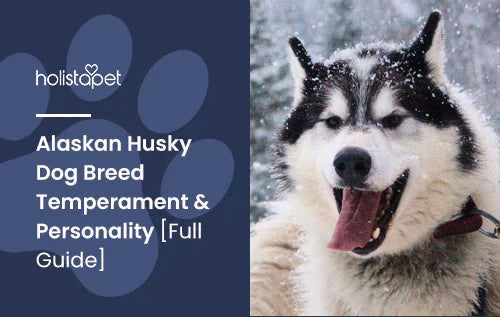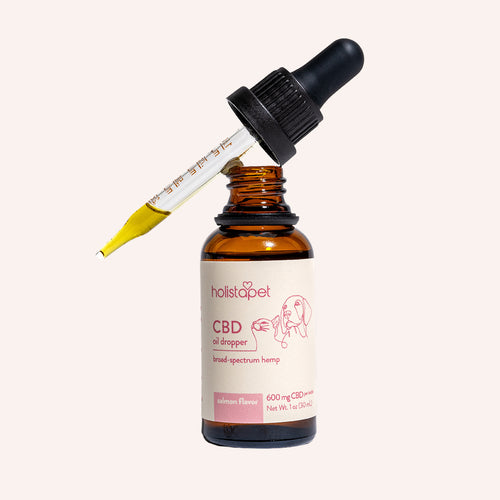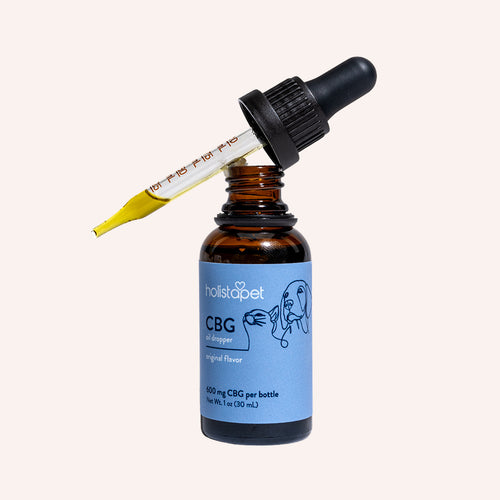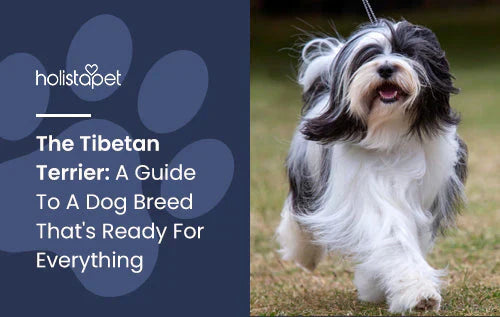Sled dog or family pet? The Alaskan Husky plays both parts with a liveliness that few other breeds can match. Endless energy, unrestrained howls, and a compulsive desire for cuddling give this canine breed a charming personality unlike any other. The Alaskan Husky isn't just one of the hardest working dogs on the planet; it's one of the most lovable as well.
If you like to keep your friends close and stay physically active, this breed is the perfect fit for you. The Alaskan Husky is the best companion to keep you bouncing off the walls, and you can expect plenty of snuggling afterward.
Alaskan Husky Physical Characteristics
No official standards govern the Alaskan Husky's appearance since the American Kennel Club does not yet recognize the breed. This lack of standards allows great variance in the breed's features, although some traits are central to the line. Alaskan Huskies share many characteristics with the Alaskan Malamute and the Siberian Husky.
For one, the Alaskan Husky has a bushy tail that curls over its back, and they share this trait with Siberian Huskies. Their pointed, triangular ears are also in common with both breeds. However, the body is where the Alaskan Husky differs the most from the Siberian Husky. In comparison, Alaskan Huskies have a much leaner build, with longer legs and a deep-set chest. Unlike their blue-eyed cousins (the Siberian Husky), Alaskan Huskies usually have brown eyes, though heterochromia sometimes occurs in the breed.
Alaskan Husky Size
On average, Alaskan Huskies grow 23-26 inches tall, although there is a vast variance in height due to the influence of multiple breeds in the line. The average weight for a male is 40-60 pounds and 35-48 pounds for a female.

Alaskan Husky Personality
The full grown Alaskan Husky has a calm disposition, and they are exceptionally affectionate. You'll find that this breed doesn't discriminate when it comes to cuddling partners — they will cozy up to children, adults, and even strangers. You could say that Alaskan Huskies crave physical contact as much as food.
Are alaskan huskies good family dogs? Generally docile and sociable, the Alaskan Husky full grown bonds strongly to its pack and rarely displays aggression. These traits make them ideal family pets. They have a lot of energy and will remain playful even as they grow into adults, so they will certainly keep you on your feet for years to come. However, due to their strong pack mentalities, Alaskan Huskies do not tolerate isolation well. Leaving a Husky alone can be a recipe for trouble. The breed may chew, howl, dig, scratch, or generally go nuts when left alone for even short periods.
Vetted Husky owners have learned this lesson by coming home to a couch with its stuffing torn out and a windowpane scratched to oblivion or a noise complaint from the neighbor. Not every Husky will exhibit this behavior, but it's worth keeping in mind if your lifestyle separates you from your dog for long periods.
Dog Breed Exercise
The Husky was bred to pull sleds through miles of snow every day, so you can imagine that they require copious amounts of exercise. You should walk a Husky daily for at least an hour, but long dog walks are recommended. A spacious environment that provides room for them to run around is best; these dogs should not be kept in residences with a yard.
Failure to satisfy a Husky's exercise requirements will result in the dog becoming bored and irritable, and that can result in mischief and destruction to your property (and an unhappy pup!).
Related: How Much Exercise Does a Dog Need Everyday? [All Breeds & Ages]
Dog Breed Training
Alaskan Huskies are very active dogs and can have a hard time sitting still in the classroom. Focusing their attention doesn't come naturally to them, so you must adapt their training sessions to help them succeed. The best way to do this is by keeping training sessions short — this will keep your Husky from getting distracted or bored. Teaching your Husky only one command can also help them focus better since they won't have to divide their attention between different tasks.
As with all dogs, it's best to stay consistent with the words used for commands. Using different words for one command can confuse your Husky and prolong the training process. Training is accomplished the quickest when only one person does it. The rest of the house can involve themselves later when the dog understands its commands better. Delegating the training to one person works for the same reason that one chosen command word works: consistency.
Training Builds The Relationship
Because Alaskan Huskies are so prone to separation anxiety, crate training is a good idea for puppies. Crate training can get your dog accustomed to being alone by gradually isolating them for longer and longer periods. You begin crate training by setting up a comfortable crate for your dog in an area of the house where they will feel safe. Then, begin bringing your dog to the crate whenever it is in a calm, relaxed mood and leave them alone.
The initial crate periods should be about 10 minutes, and then you can gradually work up to longer intervals. The idea is to foster a positive relationship between your dog and the crate, so the crate should always be comfortable for your dog and should never be used as a form of punishment. Involving the crate in playtime can help establish a positive relationship between you and your dog long-term.
Dog Breed History

True to its name, the Alaskan Husky originated in Alaska as a sled dog. Mushers in Canada and Alaska needed a high-performing breed with the stamina to transport people and supplies through the region's unforgiving terrain. Breeders set about carefully selecting lines that would create the ultimate working dog, and the Husky was born as the successful result of their efforts.
The Alaskan Husky is a mix of German Shepherd, Border Collie, Inuit Husky, Greyhound, and Siberian Husky breeds. Other breeds potentially influenced the line, but their pedigrees aren't yet confirmed. In addition to their practical function as transporters, Alaskan Huskies became popular (and quite speedy!) sled racing dogs. Today, they are still used for sled purposes in the Northwest and also make lively family pets.
Related Post: Top 11 Wolf Dog Breeds
Alaskan Husky Health Problems
What is Alaskan Husky life expectancy? Like most medium-large breeds, the Alaskan Husky is prone to some health problems. It's always best to inquire about any conditions that run in a Husky's direct family line before adopting. Ensuring your Alaskan Husky receives routine veterinary care throughout its life will go a long way in preventing some of these conditions. Regular vet checkups can also give you an early diagnosis of any problems in your dog.
Hypothyroidism
Hypothyroidism is a common issue that occurs among Alaskan Huskies. This condition occurs when your dog's thyroid (a gland that regulates metabolism and growth) doesn't produce an optimal amount of thyroid hormone. This hormone shortage results in the slowing of your dog's metabolism and causes symptoms like lethargy, weight gain, and hair loss. Medication and lifestyle changes treat this condition.
Elbow and Hip Dysplasia
Dysplasia in the hips and elbows is an unfortunately common issue in large dog breeds. Dysplasia develops when abnormalities in the connective structures (like the hip socket or the cartilage in the elbow joint) interfere with your dog's motion as they mature. These abnormalities cause lameness and arthritis in the affected joints, which seriously impacts your dog's quality of life.
Lifestyle adjustments like weight loss and exercise reduction reduce the strain on the joints, and supplements to promote joint health can provide some benefits. Pain management is a crucial aspect of treatment.
Progressive Retinal Atrophy
Progressive retinal atrophy is a genetic condition that affects the retina in a Husky's eyes. The retina is the layer of the eye that contains photoreceptor cells, which detect light. Progressive retinal atrophy causes the photoreceptor cells to slowly deteriorate over time, causing your dog to go blind. This condition often affects your dog's night vision before it impairs their day vision. Sadly, there is no treatment for retinal atrophy.
Cataracts
Cataracts are buildups of protein in the eye that obstruct the lens. They prevent the eye from receiving light and block your Husky's vision. Contrary to popular belief, blue-eyed Huskies are not more prone to this condition than their brown-eyed siblings - both phenotypes experience the condition at the same rate. Cataracts are primarily genetic, but puppies under a year old and dogs with higher blood sugar levels (diabetic dogs) are more at risk. Surgical replacement of the eye lens is the best treatment for cataracts.
Congenital Laryngeal Paralysis
The larynx is a series of plates that shut off access to the windpipe when your Husky eats or drinks. When the nerves of the laryngeal muscles become weak, your dog's larynx becomes frozen. As a result, your Husky will have a hard time controlling how much air reaches their lungs. Symptoms include coughing after exercise, noisy breathing, and a change in the sound of your Husky's bark.
How to Care for an Alaskan Husky

Alaskan Huskies will thrive for years with the right care and environment. Taking care of your pup will be a cinch once you get in the hang of their vigorous exercise routine. Grooming will be quite the task when shedding season comes around, but that thick undercoat can be defeated with enough perseverance and brushing.
Since the Alaskan Husky is a sled dog bred for snowy conditions, you should take steps to keep their environment cool. Ensure they have access to shade, plenty of water, and air conditioning during the hot summer months, and it isn’t recommended to keep them in a region that gets above 80 F (26 C). Avoid exercising your Husky in weather above 70 F (20 C).
Nutrition and Feeding for an Alaskan Husky
Considering their purpose as sled dogs, it probably goes without saying that the Alaskan Husky requires a lot of food. Adults need at least 1100 calories daily, but more active dogs can eat up to 1600. Diets high in protein and low in fat will be best for maintaining their lean, muscular builds. This breed is especially fond of fish, perhaps because it's what was most available in Northwestern territories where they mushed.
Your Husky will do fine on 3-4 cups of dry, high-quality dog food split into two daily meals. Make sure your kibble also contains some plant proteins, like lentils or peas. Your Husky needs a balance of fruit, vegetables, and meat in their diet to keep them healthy, so a kibble with both plant and meat components will be the most beneficial. If you feed your Husky only dry food, make sure they have more water on hand to compensate for the lack of water in the kibble.
Coat Color And Grooming
Alaskan Huskies have two coats to keep them warm in frigid temperatures: a thick undercoat and a short-medium length outer coat. The undercoat sheds seasonally while the outercoat remains relatively stable throughout the year. Alaskan Huskies can be either grey, black, white, brown, cream, or even red. The coats can be one solid color or multi-colored.
Alaskan Huskies are a generally pure breed. You don't need to do much to maintain their coats when they aren't shedding since they do a pretty good job of keeping themselves spotless. Alaskan Huskies will spend a lot of their downtime grooming themselves and other pack members if they're around. You should brush their coats about two or three times weekly to remove trapped hairs.
Shedding
Alaskan Huskies will go through two major shedding periods in a year. This is where things will get messy for their owners, so have the lint roller and vacuum at the ready. Your Husky's undercoat will fall out in clumps the size of large mothballs, and you will find an abundance of it all over your clothes, furniture, and wherever else your Husky wanders.
These shedding periods can last up to six weeks! During this time, brush your Husky once or twice a day with a metal brush designed to remove the undercoat. Collect the hair in a trash bag, marvel at the amount, and hire a maid when you've reached your wit's end. Do not shave your Husky.
Removing a Husky's fur will make them vulnerable to sunburn and impair their ability to regulate their body temperature. In addition to grooming their fur, brush your Husky's teeth every day and trim their nails once a month. Check their ears regularly for wax buildup and irritation.
Children And Other Pets
The Alaskan Husky's calm and docile disposition makes them very good with children! However, they tend to jump on people when they get excited so that a small child may get knocked down easily. This behavior never occurs out of aggression, but training your Husky to not jump, and teaching your child to handle the behavior, will help both parties avoid injuries.
Huskies may try to chase or hunt other small pets. If you own rodents, it's best to keep them safe in their enclosure away from your Husky.
Rescue Groups
Numerous rescue groups across the world dedicate their organization to save the Alaskan Husky (and usually the Siberian Husky and Alaskan Malamute) all over North America. For example, Forever Husky is a nonprofit rescue founded in 2009 to alleviate the overflow of Huskies in shelters in Illinois and the surrounding areas. They take Huskies from shelters and place them in loving, forever homes.
In California, Husky Haven of LA, Inc. has operated since 1982 when the founders rescued their first dog Liberty Bell. Liberty lived for 20 years! Husky Haven rescues and rehomes Huskies in Southern California.
Breed Organizations
The United States Federation of Sleddog Sports (USFSS) hopes to encourage and preserve the sport of sled racing. They actively support the welfare of all sled dogs and mushers throughout America by providing training and resources. The USFSS sponsors qualified sled teams competitions throughout the United States.
More About This Dog Breed
Alaskan Huskies are quite talkative! This breed moans and howls at the slightest provocation. Some owners have full conversations with their Husky on the daily. Their average lifespan is 12-15 years. Thinking about getting an Alaskan Husky? I would highly recommend it. This breed is fun, intelligent, and brimming with personality. They make easy friends with just about everyone, and you won't ever feel a lack of cuddles and warmth again with this dog by your side.
Related Post: Alaskan Klee Kai: Exploring The Mini Husky


 CBD Oil for Dogs - Fast Acting
CBD Oil for Dogs - Fast Acting
 Chicken Flavored CBD Oil For Dogs - Easy Dose
Chicken Flavored CBD Oil For Dogs - Easy Dose
 Salmon Flavored CBD Oil For Dogs - Highly Rated
Salmon Flavored CBD Oil For Dogs - Highly Rated
 CBG Oil for Dogs and Cats - Loved by Thousands
CBG Oil for Dogs and Cats - Loved by Thousands



![Manchester Terrier Dog Breed Temperament & Personality [Full Guide]](http://www.holistapet.com/cdn/shop/articles/Manchester_Terrier_Dog_Breed_Guide_482ca491-5803-4a7e-b8d4-910321cf9a7d.webp?v=1745578507&width=500)

Leave a comment
All comments are moderated before being published.
This site is protected by hCaptcha and the hCaptcha Privacy Policy and Terms of Service apply.